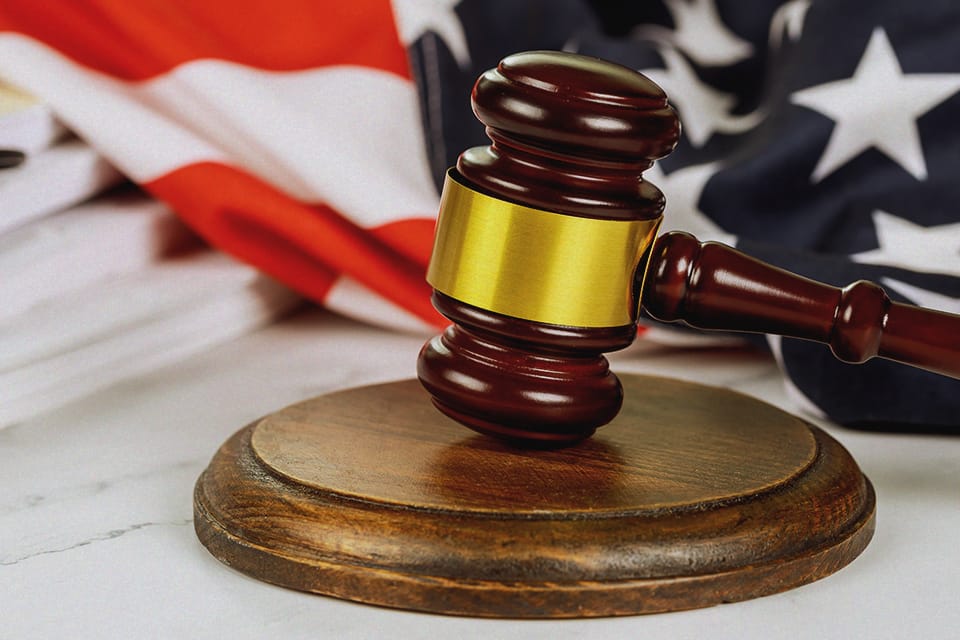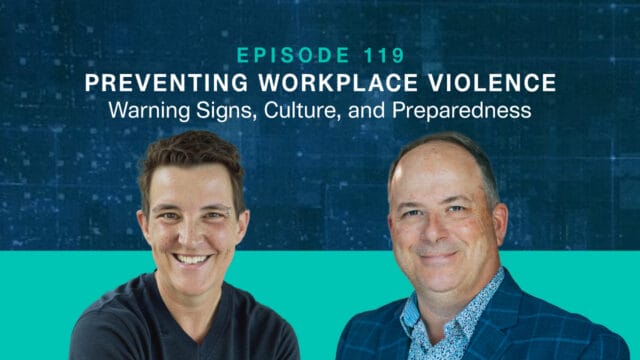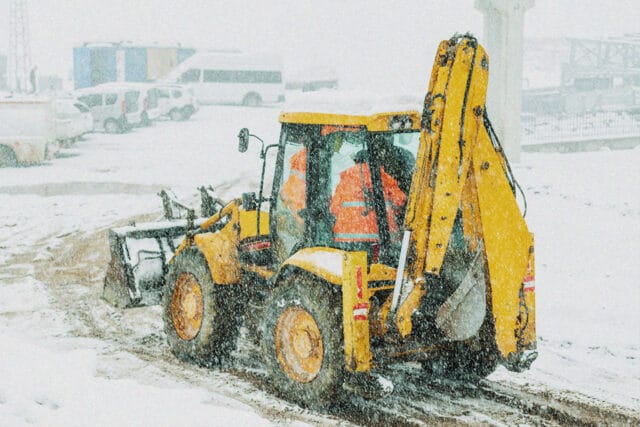
Outlook for Occupational Safety and Health in a 2025 Trump Administration

The return of the 2025 Trump administration has focused attention on anticipated changes to occupational safety and health (OSH) regulations. Given the administration’s previous approach, businesses, workers, and policymakers are preparing for significant shifts in compliance and enforcement. The legacy of the Trump administration’s first term casts a long shadow over these expectations, prompting concerns and hopes in equal measure. Understanding the historical context is crucial for predicting future trends.
Historical Context: Deregulation and its Consequences (2017-2021)
During Donald Trump’s first term (2017-2021), a pronounced shift toward deregulation significantly impacted various sectors, including occupational safety and health. The administration’s approach centered on reducing what it perceived as overly burdensome regulations that hindered economic growth and competitiveness. This philosophy directly influenced the Occupational Safety and Health Administration (OSHA). Instead of prioritizing strict enforcement of existing regulations, OSHA’s focus shifted towards compliance assistance and cooperative programs, encouraging voluntary adherence to safety standards and minimizing the threat of punitive actions for businesses. This approach was met with mixed reactions.
While proponents argued it fostered business growth and job creation by reducing compliance costs and administrative burdens, critics contended that this regulatory laxity compromised worker safety. Numerous instances were cited where reduced oversight led to adverse outcomes, particularly within high-risk industries like construction, manufacturing and oil & gas, raising concerns about increased workplace accidents and injuries. The debate highlighted the inherent tension between fostering economic growth and ensuring worker protection, a central conflict that continues to shape the OSH landscape.
Furthermore, the administration’s approach extended beyond simply relaxing existing rules; it also involved a noticeable lack of enforcement of existing safety standards. A significant leadership vacuum at OSHA itself compounded this. Failing to appoint a permanent director for a substantial portion of the term created instability and uncertainty within the agency, undermining its capacity for effective oversight and enforcement. This leadership deficit hindered OSHA’s ability to respond effectively to workplace safety issues, resulting in a perceived weakening of worker protections and a lack of accountability for businesses. The impact on morale within OSHA, and the consequent effect on the agency’s ability to attract and retain qualified professionals, further exacerbated the problems caused by the administration’s deregulatory agenda. The cumulative effect of these factors—reduced enforcement, a lack of leadership, and a general philosophy of deregulation—created a climate of uncertainty and concern regarding worker safety during this period.
Lori Chavez-DeRemer: A Potential Balancing Force?
A key factor shaping the anticipated OSH landscape is the potential appointment of Lori Chavez-DeRemer to head the U.S. Department of Labor. Her pragmatic and innovative approach, combined with her ties to organized labor, suggests a possible departure from the purely deregulatory stance of the previous administration. This balanced perspective offers hope for a more nuanced approach to OSH that considers economic needs and worker safety.
Chavez-DeRemer’s background indicates a strong interest in leveraging technology to enhance workplace safety. This includes advocating for the integration of artificial intelligence and data analytics into occupational health strategies, potentially revolutionizing risk assessment and reducing workplace accidents through proactive hazard prediction. Her potential leadership could also foster a more collaborative relationship between regulatory bodies and the private sector, aligning safety protocols with the latest technological advancements.
Chevron Deference: A Pivotal Legal Consideration
A significant legal development with profound implications for OSH regulation is the overturning of Chevron deference by the U.S. Supreme Court in Loper Bright Enterprises v. Raimondo. Chevron deference, a doctrine requiring courts to defer to federal agencies’ interpretation of ambiguous statutes, has historically underpinned regulatory agencies’ power, including OSHA’s. Being overturned, this could significantly impact the Trump administration’s approach to OSH regulations, potentially leading to increased legal challenges when implementing safety standards.
The administration might be pressured to ensure new regulations are clearly defined and legislatively backed, potentially reducing regulatory flexibility and enforcement. Conversely, it could empower businesses to challenge regulations more effectively, potentially creating a more restrained regulatory environment—a development aligned with the administration’s deregulatory ambitions. However, this might also necessitate greater care in crafting unambiguous legislative frameworks.
Legislative Expectations and Future Directions
In terms of legislative action, a 2025 Trump administration is likely to continue and enhance previous deregulatory strategies, albeit with a renewed focus on integrating safety innovations. This could involve incentivizing public-private partnerships to establish adaptable and economically sustainable safety models. Chavez-DeRemer’s influence could also lead to increased advocacy for advanced training programs focused on implementing new safety technologies and practices, preparing the workforce for increasingly automated environments.
Legislative initiatives could also include incentives for businesses adopting innovative safety solutions, such as tax breaks, grants, or public recognition, encouraging companies to prioritize safety improvements alongside economic growth.
2025 Trump Administration’s Potential Impact on OSHA’s Proposed Heat Injury and Illness Prevention Standard
The return of a Trump administration introduces considerable uncertainty regarding the fate of OSHA’s proposed Heat Injury and Illness Prevention Standard. The previous Trump administration’s approach characterized by deregulation and a lessening of enforcement actions, suggests many possible scenarios:
- Delay or Weakening of the Standard: A Trump administration might significantly delay the implementation of the standard, citing economic concerns or arguing that it is overly burdensome for businesses. The final rule could be weakened through revisions that reduce employer responsibilities or lessen the scope of protections afforded to workers. This could involve removing or altering specific requirements for heat stress monitoring, preventative measures, or worker training.
- Reduced Enforcement: Even if the standard is finalized, a Trump administration might prioritize compliance assistance over strict enforcement. This would likely reduce the number of inspections and penalties for violations, potentially diminishing the standard’s effectiveness in protecting workers from heat-related illnesses and injuries. A lack of robust enforcement could also embolden businesses to disregard the provisions of the standard.
The outcome of the standard will depend on several factors, including the composition of OSHA leadership, the political climate, and the extend to which business and worker advocacy groups mobilize in support of the proposed standard. The elimination of Chevron deference makes predicting the precise trajectory highly challenging, but the overall direction would likely lean toward less stringent regulations and enforcement compared to a different presidential administration.
Implications for Businesses and Workers
The potential elimination of Chevron deference presents both opportunities and challenges for businesses. While companies might find it easier to challenge unwanted regulations, they must also navigate a potentially fragmented regulatory landscape. For workers, the situation is more complex. Technological advancements could lead to enhanced safety standards, but the ongoing debate over enforcement and regulation will persist. Labor, industry, and safety organizations will continue advocating for comprehensive safety policies that ensure worker welfare amid regulatory changes.
Implications for Safety Professionals
The potential shifts in OSH regulation under a 2025 Trump administration present both challenges and opportunities for safety professionals. The potential rollback of regulations and reduced enforcement could necessitate a more proactive and assertive approach to ensure workplace safety. Safety professionals might need to become more adept at navigating a potentially less regulated environment, focusing on persuasive strategies to motivate businesses to adopt robust safety practices even without stringent government mandates. This might involve building stronger relationships with company leadership, demonstrating the economic benefits of safety investments, and implementing innovative technologies to improve workplace safety. However, the emphasis on voluntary compliance and collaboration also creates opportunities for safety professionals to play a more influential role in shaping company safety cultures.
Developing and implementing comprehensive safety management systems, providing effective training programs, and fostering a culture of safety within organizations would become paramount. Furthermore, the possibility of increased legal challenges to OSHA regulations necessitates enhanced legal awareness and expertise among safety professionals. The landscape could shift from primarily regulatory compliance towards a more strategic approach, demanding a broader skillset encompassing risk management, advocacy, and negotiation.
Conclusion: Navigating a Complex and Uncertain Future
The return of a 2025 Trump administration promises a period of significant transformation for OSH regulation. The uncertainty surrounding Chevron deference, the potential influence of Lori Chavez-DeRemer, and the legacy of the previous administration’s deregulatory approach all combine to create a complex and dynamic landscape.
The elimination of Chevron deference could lead to increased legal challenges and a more contested regulatory environment, potentially requiring a more proactive and strategic approach from safety professionals and creating both opportunities and challenges for businesses. The emphasis on technological innovation and public-private partnerships, if pursued effectively, could lead to advancements in safety technology and practices. However, the absence of strong regulatory oversight necessitates a focus on building a resilient occupational safety environment that relies on proactive engagement from businesses, workers, and regulators. The success of this endeavor will depend heavily on collaborative efforts to ensure clear communication, stakeholder engagement, and a commitment to workplace safety regardless of regulatory changes.
The need for proactive and adaptable safety professionals, versed in both regulatory compliance and strategic influence, is paramount.
Contact us to learn how our industry experts can help your company proactively prepare for 2025 and beyond.
About the Author
James A. Junkin, MS, CSP, MSP, SMS, ASP, CSHO is the chief executive officer of Mariner-Gulf Consulting & Services, LLC and the chair of the Veriforce Strategic Advisory Board and the past chair of Professional Safety journal’s editorial review board. James is a member of the Advisory Board for the National Association of Safety Professionals (NASP). He is Columbia Southern University’s 2022 Safety Professional of the Year (Runner Up), a 2023 recipient of the National Association of Environmental Management’s (NAEM) 30 over 30 Award for excellence in the practice of occupational safety and health and sustainability, and the American Society of Safety Professionals (ASSP) 2024 Safety Professional of the Year for Training and Communications, and the recipient of the ASSP 2023-2024 Charles V. Culberson award. He is a much sought after master trainer, keynote speaker, podcaster of The Risk Matrix, and author of numerous articles concerning occupational safety and health.




